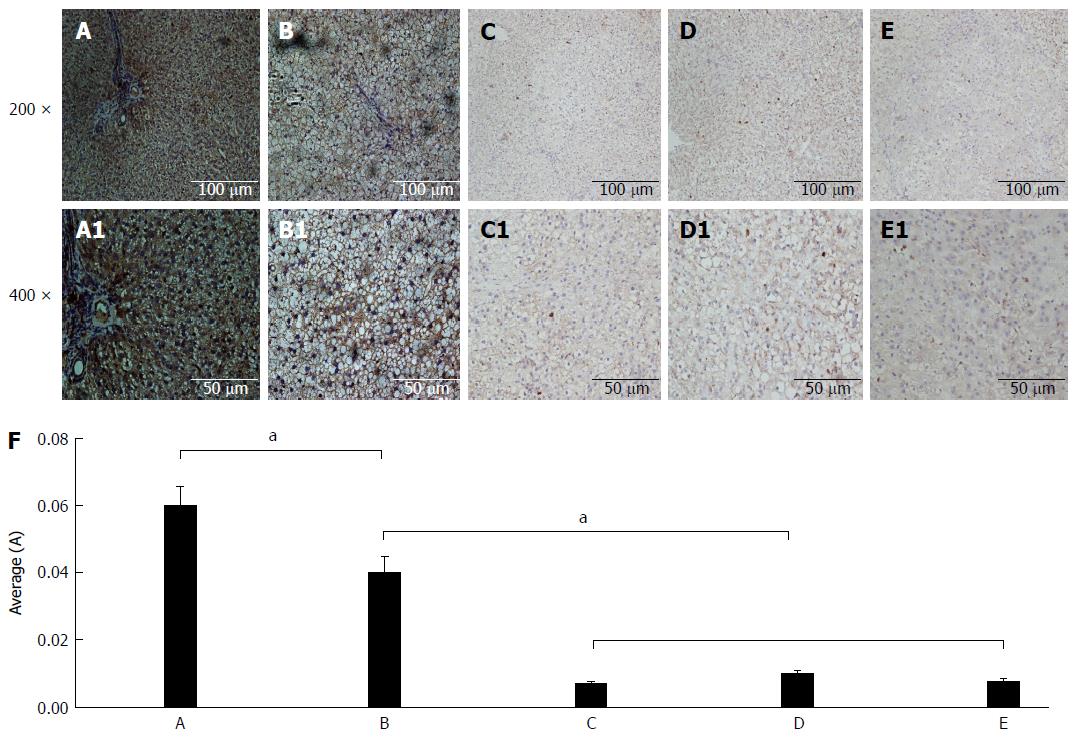Copyright
©The Author(s) 2017.
World J Gastroenterol. Jan 14, 2017; 23(2): 256-264
Published online Jan 14, 2017. doi: 10.3748/wjg.v23.i2.256
Published online Jan 14, 2017. doi: 10.3748/wjg.v23.i2.256
Figure 4 Immunohistochemical analysis of carnitine palmitoyl transferase II expression.
The CPT-II contents of rat hepatic tissues in the different rat groups were analyzed by immunohistochemistry. A: Liver sections of control rats with normal diet; B: Liver sections of the fatty liver rats with high-fat diet without 2-fluorenyl acetamide (2-FAA); C: Liver sections of the degeneration rats with high-fat diet containing 2-FAA, at early stage; D: Liver sections of precancerous rats with high-fat diet containing 2-FAA, at interim stage; E: Liver sections of cancerous rats with high-fat diet containing 2-FAA, at later stage; F: The relative quantitative analysis of CPT-II in the liver tissue; A-E: The original magnification was × 200; A1-E1: The original magnification was × 400. aP < 0.05. CPT-II: Carnitine palmitoyl transferase-II.
- Citation: Gu JJ, Yao M, Yang J, Cai Y, Zheng WJ, Wang L, Yao DB, Yao DF. Mitochondrial carnitine palmitoyl transferase-II inactivity aggravates lipid accumulation in rat hepatocarcinogenesis. World J Gastroenterol 2017; 23(2): 256-264
- URL: https://www.wjgnet.com/1007-9327/full/v23/i2/256.htm
- DOI: https://dx.doi.org/10.3748/wjg.v23.i2.256









